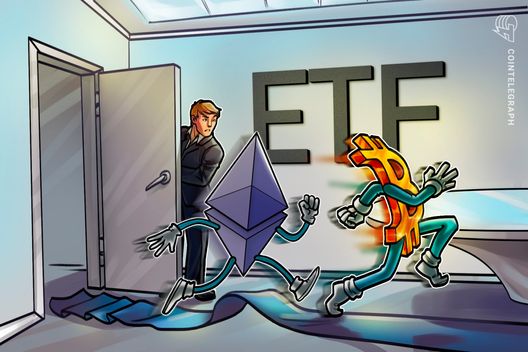In a notable turn of events within the cryptocurrency arena, Solana exchange-traded funds (ETFs) have recently seen an impressive influx, boasting over $400 million in inflows. This surge reflects a growing interest in Solana as a promising asset amidst the broader market dynamics.
However, this positive news is juxtaposed with a concerning trend for Solana’s native cryptocurrency, SOL. Following the substantial inflows, SOL’s price has experienced a troubling dip, breaking through a significant technical support threshold. This breach has led to increased anxieties among investors, with market analysts now speculating on the potential for SOL to decline further, possibly hitting the $120 mark.
“The recent uptick in Solana ETFs highlights the positive sentiment towards the ecosystem, yet the volatility in SOL’s price underscores the unpredictable nature of the cryptocurrency markets,”
said an expert in digital assets. The juxtaposition of growing institutional interest in Solana with its current price challenges paints a complex picture for traders and investors navigating this fast-evolving landscape.
Impact of Solana ETFs and Market Trends
The recent developments regarding Solana ETFs and SOL’s price movements have significant implications for investors and the crypto market.
- ETFs Attract Substantial Inflows:
- Solana ETFs have recorded over $400 million in inflows.
- This indicates growing investor interest and confidence in Solana as a blockchain platform.
- Price Volatility:
- SOL’s price has lost a key technical support level.
- This loss raises concerns about a potential price drop towards $120.
- Market Sentiment:
- Investors may experience heightened anxiety due to the price drop fears.
- Market trends could influence broader cryptocurrency investments and risk appetite.
- Long-term Implications:
- Continued inflows into Solana ETFs may bolster long-term growth if market confidence is maintained.
- A significant price correction could present buying opportunities for some investors.
Analyzing the Impact of Solana ETFs on Market Dynamics
In recent developments, Solana ETFs have witnessed a significant inflow exceeding $400 million, signaling strong investor interest in this blockchain technology. This surge in capital could provide Solana with a competitive edge in the cryptocurrency market, especially as it positions itself as a faster and more scalable alternative to Ethereum. The influx of funds into Solana-related exchange-traded funds indicates that institutional confidence is rising, possibly positioning it as a leader among blockchain platforms.
However, despite these promising inflows, the price of Solana (SOL) has recently experienced a notable decline, breaking through critical technical support levels. This downturn raises concerns among investors, with many fearing a potential drop toward the $120 mark. Such volatility can create hesitance in the market, impacting traders and confidence levels as investors grapple with the juxtaposition of strong ETF performance and declining asset prices.
The current scenario may benefit traders who are adept at navigating volatility and seeking short-term gains, as price fluctuations can provide lucrative opportunities. Conversely, long-term investors may find themselves in a precarious situation, as the loss of technical support denotes uncertainty and could prompt further sell-offs. This complex interplay of inflows and price action highlights the dual nature of Solana’s market position: while the ETF success signifies institutional validation, the pressing price concerns could deter retail investors seeking stability.
Overall, the landscape is ripe with both promise and peril. While Solana’s appeal is amplified via ETF developments, the hesitance prompted by SOL’s technical struggles could lead to cautious investment strategies. Stakeholders must weigh the potential for growth against the realities of market fluctuations in this rapidly evolving sector.








